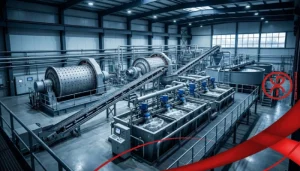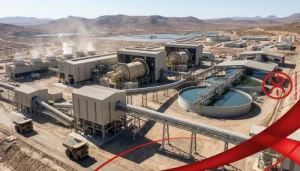Ball milling utilizes various materials such as ceramic balls, flint pebbles, and stainless steel balls as grinding media.
These are selected to effectively pulverize and diminish particle sizes during processing. Ceramic balls are favored for their exceptional hardness and wear resistance. Flint pebbles, composed of silica, are prized for their minimal contamination and superior grinding capabilities. Stainless steel balls are chosen for their substantial density and negligible impurities.
Beyond these, alternative grinding media may be employed, tailored to the milling application at hand. The selection is Influenced by factors like target particle size, material hardness, and acceptable contamination levels.
Notably, high-energy ball mills are designed to mill tough, brittle substances. They operate with high-velocity balls or beads that shatter and abrade materials swiftly, achieving effective particle size reduction. These mills are typically used to mill metals, alloys, ceramics, and minerals.
In essence, the choice of grinding media in ball milling hinges on the application specifics and the desired characteristics of the end product. Considerations such as material hardness, contamination resistance, and grinding proficiency are pivotal in media selection.
For top-tier grinding media suited to your ball milling requirements, Our ball mills is your go-to source. We provide an extensive array of ceramic balls, flint pebbles, and stainless steel balls, designed for effective, pure grinding.
Our offerings are ideal for milling and refining particles in ball mills, delivering prime outcomes. From dense ceramic balls and authentic flint pebbles to robust stainless steel balls, our range has it all
What are the parts of a ball mill?
A ball mill is an essential piece of grinding machinery that blends and pulverizes materials for a range of industrial uses. It is composed of multiple parts that collaborate to mill materials effectively. The key components of a typical ball mill are:
Grinding Media: These elements, which can be spherical or cylindrical in shape, are crafted from steel, ceramic, or other substances. They play a crucial role in grinding and pulverizing the material in question. The size and makeup of the grinding media are selected based on the specific application and the material being milled.
Milling Chamber: Also referred to as the grinding chamber or drum, this cylindrical space houses the material for milling. Constructed from materials like steel, stainless steel, or ceramic, it holds both the grinding media and the material.
Drive System: This system is responsible for the rotation of the milling chamber and the grinding media. It encompasses an electric motor, gearbox, and a series of gears or belts that transfer rotational force to the mill.
Discharge and Feed System: These systems manage the entry and exit of material in the mill. The feed system introduces material to the milling chamber, while the discharge system removes milled material, which may be through a grate or overflow method.
Liners: Serving as a protective layer inside the milling chamber, liners shield it from the wear and tear caused by the grinding media and the processed material. They are typically made of rubber, metal, or ceramic.
Bearings: These components support the mill’s drum and enable its rotation. Positioned at both ends of the mill, they are vital for smooth and efficient operation.
Drive Shaft: Linking the motor to the mill’s drum, the drive shaft conveys the motor’s rotational energy to the drum via the drive system.
Control System: Modern ball mills often feature sophisticated control systems that oversee and adjust various parameters like speed, temperature, and material flow, enhancing the milling process’s efficiency and quality.
Support Structure: The ball mill assembly is generally supported by a robust structure or frame, ensuring its stability and proper component alignment.
While these are the fundamental elements of a standard ball mill, designs and configurations can differ based on the application and manufacturer. Various industries may employ different types of ball mills tailored to their specific requirements, such as cement mills, ceramic ball mills, or planetary ball
- Performance and Efficiency: Different ball mills are designed to achieve specific grinding goals. Whether you need fine grinding for pharmaceuticals or coarse grinding for mining, choosing a mill optimized for your application ensures efficient operation and desired particle size distribution.
- Material Compatibility: Ball mills come in various designs suited to handle different materials—from soft and brittle to hard and abrasive substances. Selecting a mill that matches the material properties (such as hardness, abrasiveness, and chemical reactivity) prevents wear and contamination issues, thereby extending equipment lifespan and maintaining product quality.
- Process Flexibility: The variety of ball mill types—such as batch, continuous, dry, wet, vertical, horizontal, and more—offers flexibility to match specific production requirements. This adaptability allows seamless integration into existing processes or customization for new applications, ensuring versatility in operations.
- Scale and Capacity: Choosing a ball mill with the right capacity and scale is essential for meeting production demands. Whether you need a small-scale laboratory mill or a large industrial-grade mill, selecting based on throughput requirements ensures optimal throughput without compromising efficiency or quality.
- Operational Costs and Maintenance: The best ball mills are designed for minimal maintenance and reduced operational costs. Features such as durable construction, efficient grinding mechanisms, and ease of maintenance contribute to lower downtime and overall operational expenses.
- Technology and Innovation: Advances in ball mill technology introduce new features like high energy input, advanced cooling systems, and precise control mechanisms. Choosing a mill that incorporates these innovations enhances performance, improves product quality, and future-proofs your investment against evolving industry standards.
- Safety and Compliance: Modern ball mills are designed with safety in mind, incorporating features like automatic shutdown mechanisms, protective enclosures, and ergonomic designs. Ensuring compliance with safety regulations and standards protects personnel and assets, fostering a safe working environment.
- Supplier Reliability and Support: Opting for reputable suppliers ensures reliable delivery, quality assurance, and ongoing support for maintenance and troubleshooting. Choosing a trusted supplier provides peace of mind and ensures long-term partnership for continuous improvement and technical support.
In conclusion, selecting the best ball mill involves assessing specific needs, considering material properties, operational requirements, and technological advancements. This strategic approach maximizes productivity, enhances product quality, and optimizes operational efficiency across various industrial applications.
Comminution Processes:
1. Crushing: This is the initial stage where large rocks or ore particles are subjected to mechanical forces to reduce their size. Jaw crushers, gyratory crushers, and cone crushers are commonly used in crushing operations.
2. Grinding: Following crushing, grinding further reduces the particle size of the material. Grinding is typically performed using ball mills and rod mills, where the grinding media (balls or rods) cascade within the mill to crush and grind the material. Grinding is usually carried out wet, enhancing efficiency and reducing wear on the grinding media.
prevent galling and seizing in stainless steel fasteners
- Selecting the appropriate grade, utilizing anti-seize compounds, applying correct torque and alignment, opting for different materials or coatings, and considering alternative fastening methods are all crucial steps to ensure the longevity and functionality of stainless steel fasteners.
These components are integral to machine design due to their resistance to corrosion, strength, and durability.
Nevertheless, they are prone to galling and seizing when over-tightened, potentially leading to thread damage and making removal challenging.
Galling and seizing typically occur from high-pressure friction between the fastener and its counterpart, sometimes resulting in the metals welding together. This issue can arise even with lubricated fasteners if they are subjected to excessive torque or are not properly aligned.
To mitigate the risk of galling and seizing, it’s important to adhere to established best practices and guidelines, which will be explored in this discussion.
Choose the right grade
Different grades of stainless steel offer varying levels of resistance to galling and seizing. Typically, grades with higher levels of chromium and nickel are less prone to these issues.
For instance, austenitic stainless steels like grades 304 and 316 are more resistant to galling and seizing compared to ferritic or martensitic types such as grades 410 and 420.
However, it’s important to note that austenitic steels tend to have lower strength and experience greater thermal expansion than other stainless steel grades, which could influence the fasteners’ performance and fit.
Selecting the right grade for your application involves weighing the resistance to galling and seizing against the material’s mechanical and thermal characteristics.
Comparing Performance and Efficiency
When comparing ball mills, performance and efficiency metrics are crucial for determining the best option for your specific needs. Factors like grinding speed, energy input, particle size distribution, and throughput capacity directly impact performance. High-energy ball mills like the Retsch Emax are designed for rapid and effective grinding of hard, brittle, and fibrous materials, while planetary ball mills excel in achieving ultra-fine particle sizes suitable for nanotechnology applications. Evaluating these metrics ensures optimal grinding efficiency and desired product quality.





